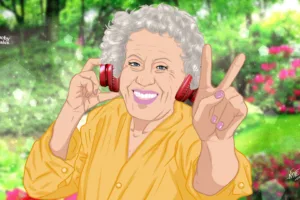Ageism In The Workplace: How To Challenge It And Shine Again
Have you recently been pushed aside or given tasks beneath your skill level, as well as not being invited to certain meetings? Ageism is still taboo in the workplace. It’s mostly covert and worse still, it’s one of the most common forms of prejudice.
Today, more than ever, women bear the brunt of this: they are more likely than men to lose their jobs in midlife. Also as reported by the BBC: “as soon as women show visible signs of ageing, they are viewed as not only less attractive but also less competent. This is known as the double whammy of sexism and ageism“.
Ageism, the covert bias
It is unlawful in the UK, under the Equality Act 2010, to discriminate because of an individual’s age. The Employment Act (ADEA) also forbids age discrimination against people who are age 40 or older in the US. But like many other forms of direct and indirect bias, it can be hard to prove that it has actually taken place.
According to AARP, 64 per cent of workers in the US have witnessed or experienced age discrimination. Also, the number of ageism related claims has increased sharply during the pandemic. It’s reported that this is because many of them have been disadvantaged by job losses and job support schemes such as furlough. The impact has been felt more sharply by women than men: the prevalence of ageism against females makes for powerful reading. The data shows mature women are offered less training than their male counterparts. What’s more, female workers at the intersection of their lives, who are menopausal and often have caring responsibilities, face lower pay and promotion prospects than men.
They also face bias in recruitment for promotion or new opportunities. This prejudice comes from the employer but worse still it comes from ourselves. Research shows that nearly half of women over 50 thought that their age would disadvantage them if they applied for a new job. This self-limiting belief can show up in our half-hearted applications for jobs that we are more than capable of getting; and in interviews where we project ourselves in a way that suggests we have lost the opportunity before we even start!
What employers can do to overcome ageism in the workplace
As advised by the Financial Times, employers should do more to support a diverse multigenerational workforce. Having consistent protocols in place for dealing with ageing employees and making them feel more included, respected, and appreciated is critical.
If you are in charge of your team, here’s what you could do to create a better environment:
- Train everyone involved in recruitment to overcome their bias when it comes to age and consciously look to recruit age- positively. Make sure that adverts are accessible to everyone and avoid language and images targeted at younger workers.
- Promote the major benefits of an age-diverse workforce which plays to the strengths of everyone in the team. Use schemes such as mentoring and peer support to encourage training and development and create opportunities for new learning whenever possible.
- Encourage flexible working and provide opportunities for older women to take time away from work to care for loved ones, such as sabbaticals and career breaks.
- Set up focus and support groups for older women to talk about the issues that they are facing, such as menopause, so that positive action can be taken within the workplace.
How mature employees can face the prospect of ageism at work
Anyone who’s been in business long enough knows that technology can’t rival traditional soft skills, such as teamwork, critical thinking, a positive attitude, and a strong work ethic. Here are a few ways mature professionals can conquer the test of time.
- Rethink and reframe.
The way we talk to ourselves about what we think we can and can’t do at certain ages holds us back. We should brand ourselves better. Because of our age, we are wiser and more patient and more confident because of what we have experienced – we just need to remind ourselves of this each day. - Gift your time and energy to support others.
Offer to mentor others in the workplace. We need to be willing to reflect and share our successes and our failures and most critically talk about what life has taught us. In this way we make ourselves feel good, by passing on our knowledge and taking pride in what we have achieved. - Take your talents and use them for your own benefit.
The UK professional women’s network AllBright reports that one in four women is setting up her own business. This is often as a result of working for employers who failed to recognise their talents and potential. - Keep challenging and take every opportunity to change the narrative around you.
This is very important for the benefit of those younger women coming along behind us. We owe it to them to change the path they will walk and make it different from the one we have had to tread. As the American researcher and speaker Brene Brown says: ‘don’t shrink, don’t puff up, just stand your sacred ground!’
Like this article? Support Us or Sign up to our newsletter to get more articles like this delivered straight to your inbox!





